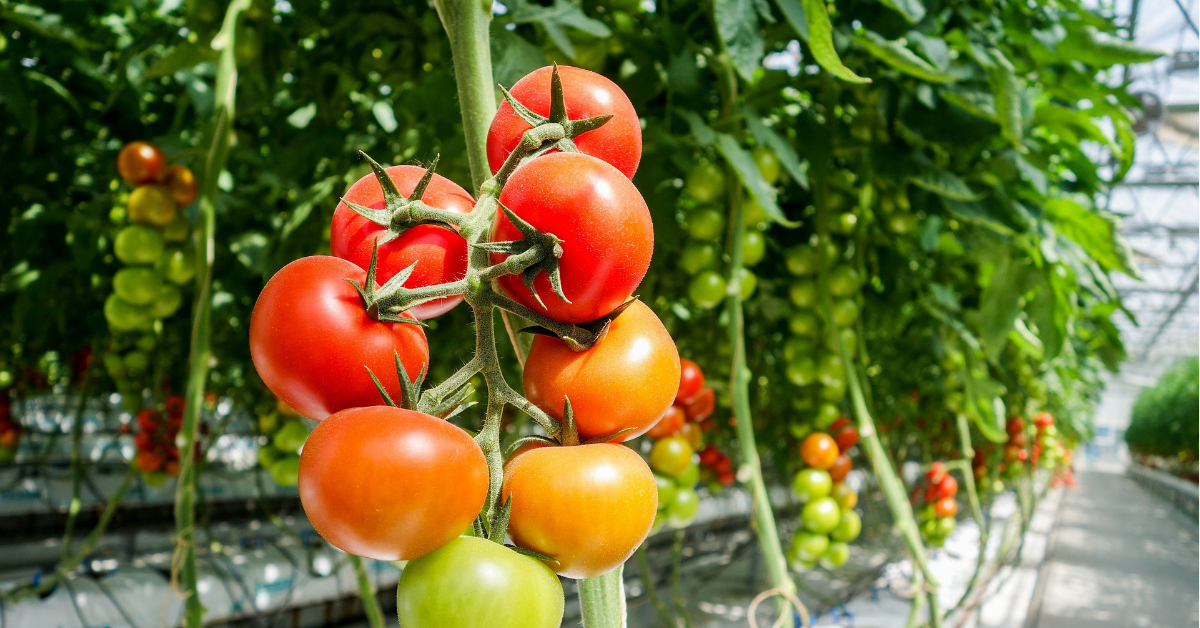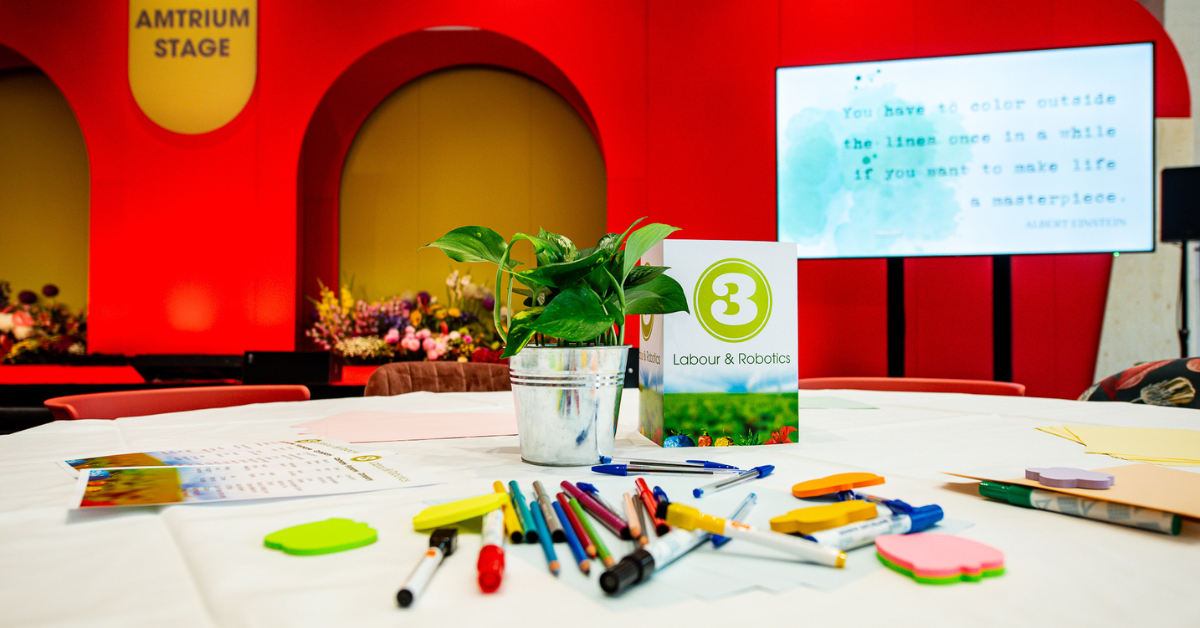Start-up redefines irrigation in horticulture
GreenTech is shining a spotlight on the transitions happening in the world today. With numerous challenges such as climate change, water scarcity, and the need for more sustainable practices, the current food production systems are being greatly affected. In a series of articles, we will delve into the challenges and opportunities of these transitions in the horticulture industry. In this article we focus on water and specifically on an innovative startup that wants to redefine irrigation as we know it.
The use of water in horticulture is a hot topic. In many parts of the world, water is scarce. Moreover, companies are increasingly expected to deal with their natural resources in a sustainable way. In recent years, all kinds of techniques have therefore been developed for reusing water and monitoring water consumption in the greenhouse. But the standard method for irrigating the plant has not changed at all.
Obligation to next generations
Edigna, a startup from the Brightlands Innovation Campus Venlo in the Netherlands, wants to change that. They are developing a new irrigation system for indoor farming. The startup was created when it was confirmed after feasibility studies that current irrigation systems are not as efficient as they could be, says Kharim Pani of Edigna. “With the need of food security in the world and water scarcity it felt like an obligation to the next generation to find a solution.” As inventor of a completely new irrigation concept, Pani focusses on all relevant technical aspects.

The product of Edigna enables the grower to avoid the wasting of water (draining) while assuring a correct irrigation distribution and improved fertigation quality. “In addition, it enables shifting the irrigation strategy from reactive water management to proactive water management which avoids mineral (EC) accumulation while improving fertigation quality”, says Pani. “By applying batch processing and a segmented pressurized irrigation network it enables unlimited fertigation recipes avoiding the spreading of bacteria, fungi or biofilm.”
Water batches on demand
The system makes it possible to transport water batches on demand to the plant zones. The applied pressure facilitates not only the transport, but also assures cleaning the tubes by removing residue and avoiding growth of fungi or biofilm. The irrigation system avoids recirculation/recycling (two way). Instead, it applies ‘one way’ direction by transporting the exact amount of fertigation to the plant zone, avoiding drain and spreading of waterborne bacteria. “By using vacuum and air pressure in the irrigation network, the tubes are clean before and after the transport, no cross contamination from recipe variation and no more biofilm. Finally, every batch can have different content enabling unlimited recipes which will accelerate the research to improve the fertigation, enabling fertigation on element level moving away from the traditional A & B fertigation.”
As LEAN Six Sigma expert Pani is always looking for opportunities to eliminate waste in processes. “The recycling of wastewater in irrigation is a good example of the waste type overprocessing. I was intrigued by the fact that apparently nobody noticed the great opportunity to save water, nutrients, energy, and the simplification of the irrigation process.” Pani did see great innovations in Indoor Farming, like climate computers, low energy led lights, temperature screens, etc. “But what about water? Water is the source of life, so we need to stop wasting water by improving the efficiency of irrigation systems.
Instead of adding the latest technology to the outdated irrigation process, use technology to redefine the core of the irrigation process. Water scarcity is becoming a big problem requiring urgent innovation.”
.jpg)
From scepticism to curiosity
Informal testing has confirmed the feasibility, says Pani. “And currently we are preparing a formal feasibility study executed by a global renowned research institution. Before we can start testing it in practice, first we need to have the confirmation from an independent research institute to assure that it is a proven and reliable solution.” According to Pani growers are usually very conservative when it comes to innovations. “So, the first reactions were sceptic. But once the concept is explained and demonstrated, it changes into curiosity with positive feedback as the innovation resonates with simple logic. But it remains difficult to change the mindset of people who are used to certain ways of working, almost like they fear the unknown. For example, often I get feedback like this: nice story but without draining you will get mineral accumulation impacting the health of the plant. But recent publications confirmed that it is indeed possible to grow tomatoes without draining the rootzone.”
Peter Korsten is CEO at Botany Group, a research group in the field of plant physiology, plant health and cultivation technology. He helps the startups affiliated with Brightlands Campus Greenport Venlo with advice on the opportunities and needs in greenhouse horticulture. “In horticulture, there is a need for greater uniformity in irrigation systems, in order to reduce the use of water and fertilizers and to reduce the amount of leaching and wastewater. Edigna's innovation offers opportunities to achieve this through a smart irrigation system. With this system, a part of the greenhouse can be provided with specific irrigation and fertilization very precisely.”
More water than needed
Korsten sees an increasing need to be able to control the plant better in its needs with a more accurate system, which makes the plant more resistant to diseases and the end product has a more desired composition. “The types of systems that we currently use in horticulture make it necessary to give a larger amount of water than the plant needs. This over-irrigation is necessary to achieve sufficient uniformity. Parts of the greenhouse with greater evaporation need more water, places where there is less irrigation water have a shortage. The Edigna system makes it easier to send different amounts of water to the parts of the greenhouse with a different plant need or plant type.”
Korsten therefore believes that Edigna's irrigation system can have an impact in horticulture. "The precisely tailored irrigation and fertilization reduces the losses of water and fertilizers in cultivation and makes the plants more resilient, which reduces the chance of diseases. In the end, this can also reduce the necessary use of crop protection products."
Watch an explainer video below.
Have exclusive horticulture technology news delivered to your inbox
The GreenTech monthly newsletter brings you the latest exclusive horticulture technology news and updates about our global horticulture technology trade shows and events.
Join over 32,000 of your peers and receive:
☑ Exclusive commentary from industry leaders
☑ The latest news from the GreenTech team
☑ Stay up to date with all the latest news about our events





